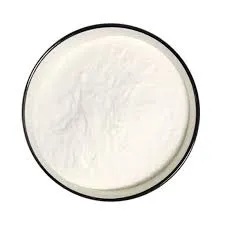
Nov . 11, 2024 00:56 Back to list
Current Trends in Hydroxyethyl Cellulose Pricing and Market Analysis
Understanding Hydroxyethyl Cellulose (HEC) and Its Pricing Dynamics
Hydroxyethyl cellulose (HEC) is a non-ionic, water-soluble polymer derived from cellulose. It is widely used in various industries, including pharmaceuticals, cosmetics, food, and construction, due to its thickening, binding, and film-forming properties. The increasing demand across these sectors drives the interest in understanding the pricing dynamics of HEC.
HEC is primarily used as a thickening agent, stabilizer, and emulsifier in various formulations. In the pharmaceutical industry, it is commonly utilized in ointments, gels, and controlled-release drug formulations. The cosmetic industry employs HEC in lotions, creams, and hair care products because of its ability to enhance texture and improve product stability. Furthermore, HEC is becoming increasingly popular in food products, acting as a food thickener and stabilizer, particularly in gluten-free formulations.
Understanding Hydroxyethyl Cellulose (HEC) and Its Pricing Dynamics
Another significant factor affecting the price of HEC is the production capacity and technological advancements within manufacturing processes. As manufacturing technology improves, producers can often scale their operations more efficiently, potentially reducing costs. Companies investing in innovative production methods may offer more competitive pricing, thereby influencing market prices.
hydroxyethyl cellulose price

Market demand plays an equally crucial role. With the growth of industries that utilize HEC, particularly in emerging economies, the demand for this cellulose derivative is expected to rise. For instance, the construction industry increasingly employs HEC in cement and plaster formulations due to its water-retention properties, allowing for better workability and longer open times. Likewise, the cosmetic and pharmaceutical industries show continuous growth, further driving the demand for HEC.
Regulatory factors also impact HEC prices. As a material used in food and cosmetics, it is subject to strict regulations by health and safety authorities in different regions. Compliance with these regulations can increase production costs, which may be passed on to consumers through higher prices. Hence, manufacturers must remain vigilant in aligning their production processes with evolving regulatory frameworks.
Competition within the hydroxyethyl cellulose market further influences pricing. There are numerous manufacturers globally, and as more companies enter the market, competition can drive prices down. However, pricing strategies may vary significantly based on the quality and specifications of the HEC produced. Premium products, which might offer enhanced performance characteristics or tailored formulations, could be priced higher due to their additional value.
Moreover, global economic conditions, such as inflation and shifts in supply chains, can impact HEC pricing as well. Events such as natural disasters, geopolitical tensions, or significant shifts in trade policies could disrupt the supply of raw materials or increase production costs, leading to price fluctuations in the market.
In summary, the pricing of hydroxyethyl cellulose is influenced by a complex interplay of factors, including raw material costs, production capacity, technological advancements, market demand, regulatory compliance, competition, and global economic conditions. As industries continue to expand and innovate, understanding these dynamics will be essential for stakeholders involved in the supply chain of HEC. Staying informed about these trends can help businesses better navigate the market and make strategic decisions regarding sourcing and pricing of hydroxyethyl cellulose. With a clear picture of the factors at play, manufacturers, buyers, and researchers can effectively respond to the evolving landscape of hydroxyethyl cellulose pricing.
-
Versatile Hpmc Uses in Different Industries
NewsJun.19,2025
-
Redispersible Powder's Role in Enhancing Durability of Construction Products
NewsJun.19,2025
-
Hydroxyethyl Cellulose Applications Driving Green Industrial Processes
NewsJun.19,2025
-
Exploring Different Redispersible Polymer Powder
NewsJun.19,2025
-
Choosing the Right Mortar Bonding Agent
NewsJun.19,2025
-
Applications and Significance of China Hpmc in Modern Industries
NewsJun.19,2025







